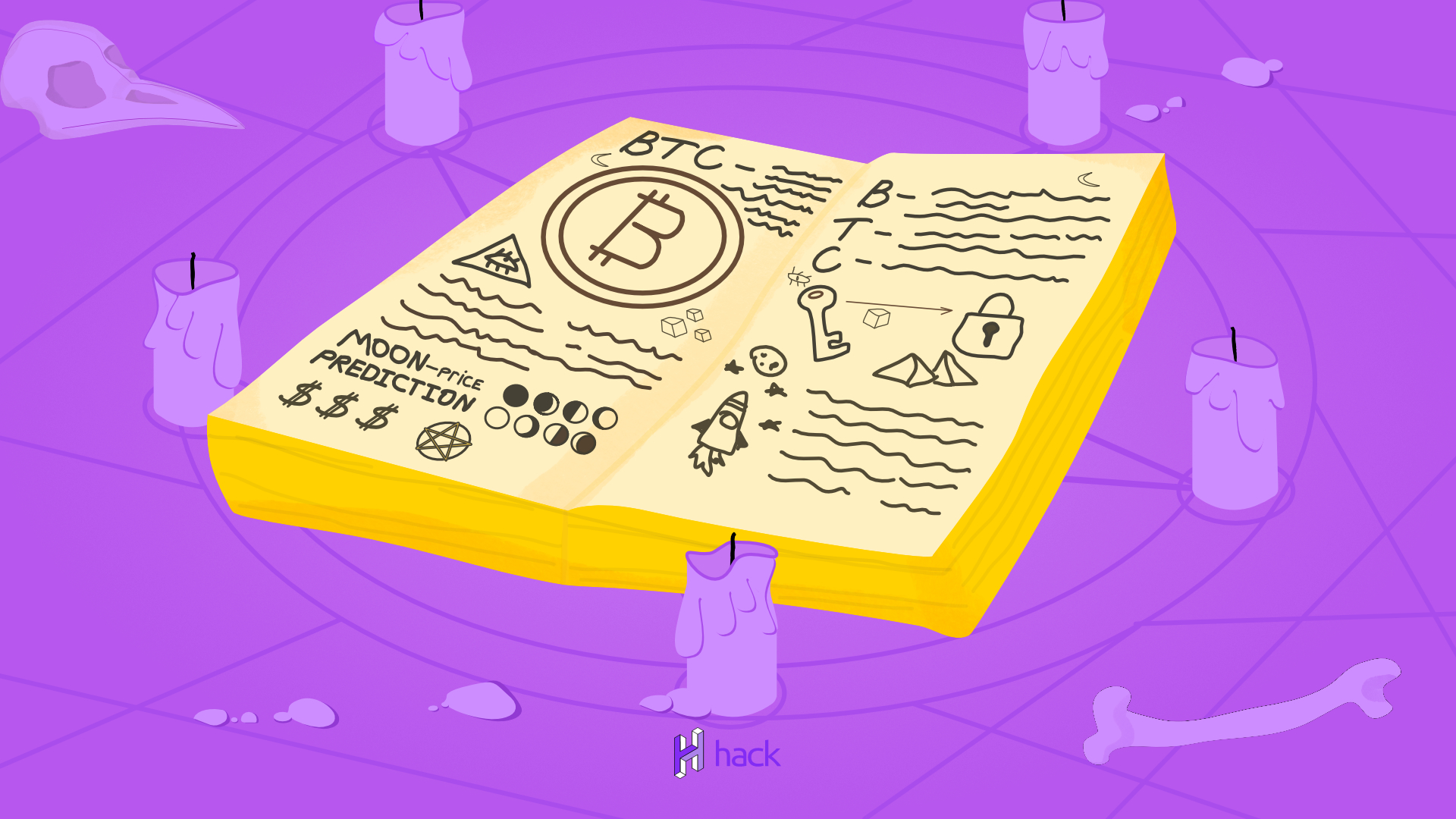Misconceptions about bitcoin are abundant and everywhere. People aren’t taking the time to do their research, and there is a learning curve between what is fact and what – fiction. We provide an overview of the five most common myths and misconceptions people tend to have about the mother of all cryptocurrencies, as well as the facts, statistics and researches behind them.
Let’s see if they have any merit or it is safe to say they are busted.

Today’s forecast: (pops an umbrella open) Seventy per cent chance…of statistics!
Myth #1: Bitcoin is a scam/ Pyramid scheme
While it’s true that some people buy Bitcoin as a speculative investment or a get-rich-quick scheme, that doesn’t mean that Bitcoin itself is a scheme. Furthermore, to be called a Pyramid, scam or bubble, first, one must know how those work and exist in the first place – as a result of continuous money streams being moved into a system via an ever-growing number of people or as an economic cycle characterized by unsustainable rises in market value.

Bitcoin, on the other hand, does not support any of these forms of scam…
- Because Bitcoin is a peer-to-peer, open-source currency and there’s no central entity to lead these schemes.;
- Bitcoin has gone through multiple price cycles over the course of over 12 years — and has recovered each time to achieve new highs. As with any new technology, boom and bust cycles are expected.;
- Some major bitcoin investors believe that it’s oscillations form a pattern typical of young markets. Bitcoin, they say, will surge and recede with smaller swings and longer durations between them until at some point in the future it settles into relative stability.;
- You can read the Bitcoin white paper to understand more behind the concept and why this is not a scam. 🙂
Myth #2: Bitcoin doesn’t have real value
Bitcoin might not be backed by a physical asset (gold) – but is the US dollar or any other fiat? Bitcoin, unlike the US dollar, is hard-coded to be scarce, which helps make it resistant to inflation. Inflation with fiat currencies can occur when large quantities are created/printed, thus diluting the existing supply.
- Bitcoin is backed by math and code and is scarce, which means there are only going to be 21,000,000 bitcoin created. This scarcity is a major driver of its value.
- Not only is the supply capped, but the amount of new bitcoins being mined is declining over time in a predictable way. Every four years, in an event, called a “halving,” block rewards paid to miners in the network are cut in half.;
- This helps ensure that the supply is always reducing which, by the basic economic principle of scarcity, has worked to keep the price of bitcoin trending upwards over the long-term — from less than a penny at the start to ~ $60,000 as of November 2021.;
- Bitcoin also derives value from the work the nodes on the network contribute via a process called mining. Powerful computers all over the world supply a vast amount of processing power towards the work of validating and securing every transaction (in exchange for part of a new bitcoin and fee).
Myth #3: Bitcoin isn’t secure
There are a few major characteristics of Bitcoin that make people sit up and take notice. The first is that, as per its design, Bitcoin is decentralized. Satoshi Nakamoto built the Bitcoin network to be independent of any governing or central authorities, and it does exactly that by maintaining all of its transactions on a distributed ledger network – the Bitcoin blockchain – all over the world. There is no bank to control the system, and no government to shut it down. If some of the nodes in the blockchain were to be shut down for any given reason, the rest of the nodes around the world would continue to keep the network running, thus making sure that the system doesn’t operate on the goodwill of the central authorities. Because of its decentralized nature, and the encryption methods used for recording transactions, bitcoins are said to be more secure than fiat currency kept in a bank account.
How so, you may wonder?
Well, money held in a bank account is sitting on potentially precarious ground – theoretically, banks can be susceptible to theft, hacks, financial crisis or asset seizures by the government. Comparatively, bitcoin is less susceptible to all of these dangers.
- Unlike many well-known companies and brands, the Bitcoin blockchain has never been hacked. As the network grows in size, the level of security increases. In order to attack the network, 51% or more of the network has to be overtaken.;
- A vast amount of computing power secures the Bitcoin network. And the nodes that power it are more than 14 000 (as of Nov. 2021) and are distributed throughout the world.
Myth #4: Bitcoin has no real usage
Critics like to claim that Bitcoin isn’t useful in the real world — or if it does have a use, it’s mostly useful for illegal activities on the dark web. Neither of those statements is true. Bitcoin has a history as a means of making payments to anyone in the world, all without a bank or payment processor in the middle.
- In recent years, bitcoin has become increasingly popular as an inflation-resistant store of value much like gold. A growing number of major funds and publicly traded companies have bought millions of dollars worth of bitcoin as a means to better manage their assets.;
- Much like gold, Bitcoin is scarce (there will never be more than 21 million bitcoins). Gold, of course, is heavy, bulky, and difficult to transport and store. Bitcoin, on the other hand, can be sent digitally as easily as sending an email.
- There are actually companies that accept bitcoin as a method of payment – Starbucks, PayPal, and Etsy are just some of them.;
- According to the World Economic Forum, 32% of Nigerians own Bitcoin for peer-to-peer payments. In regimes like Russia and Belarus, Bitcoin is sometimes the only way to fund anti-corruption efforts and protests. That looks pretty useful.
- Like any form of money, some of it will be misused. But compared to US dollars, illicit use of bitcoin is a drop in the bucket. According to a 2021 report – in 2020, the criminal share of all cryptocurrency activity is just 0.34%.;
- And because all Bitcoin transactions happen on an open blockchain, it’s often easier for authorities to track illicit activity than it would be in the traditional financial system.

Myth #5: Bitcoin is a waste of energy and bad for the environment
Something “wastes” energy only to those who think it serves no useful function. The Bitcoin network secures $1 trillion in value and serves millions of people, including many without access to traditional payment networks. Miners often colocate to where power is abundant and free, which often means renewable hydroelectric or geothermal sources.
According to the Bitcoin energy consumption index, the current electricity demand for bitcoin mining is 196 terawatt-hours of electricity annually, which is comparable with the annual energy consumption of Thailand. That’s almost 0.5% of all electricity consumption worldwide. But according to Cambridge Bitcoin Electricity Consumption Index, a significant portion of Bitcoin mining is powered by renewable energy sources (including wind, hydro, and solar). The actual number ranges from 20% to more than 70%.
- Recent research by New York-based fund Ark Investment Management concludes that “Bitcoin is much more efficient than traditional banking and gold mining on a global scale.”;
- There’s a good chance the energy use stays constant or even decreases while the number of transactions grow. There are now several attempts to develop second-layer networks, or new open consensus mechanisms, that could allow for thousands and even millions of transactions per second. The Lightning Network and similar payment channel infrastructures aim to do batch settlement of several transactions by writing only two transactions to the blockchain itself, and it has automatic controls (smart contracts) in place so you won’t have to trust the honesty of the person doing the batch settlement on your behalf.;
- If you compare the electricity use of cryptocurrencies to that of traditional fiat currencies, you’d find that the US dollar is significantly worse for the environment.;
- An argument can even be made that the economic incentives inherent to Bitcoin mining are helping drive sustainable energy innovation, as miners constantly seek to increase profits by lowering their electricity costs.;
- It also takes a lot of energy to run TikTok, or the U.S. Department of Defense. Bitcoin’s carbon footprint is often comparable to the carbon footprint of Nigeria and as the Cambridge researchers concluded: “Bitcoin’s environmental footprint currently remains marginal at best.”
Conclusion:
Just like real Myth Busters – we are using the power of science combined with some thorough research and statistics to safely conclude that all 5 Myths are:

This article is for information purposes only and should not be relied upon as investment advice, personal recommendation, or solicitation to, buy or sell any financial instruments. hack.bg makes no representation and assumes no liability as to the accuracy or completeness of the content of this article. Make sure you understand the risks involved in trading before committing any capital. Never risk more than you are prepared to lose.



